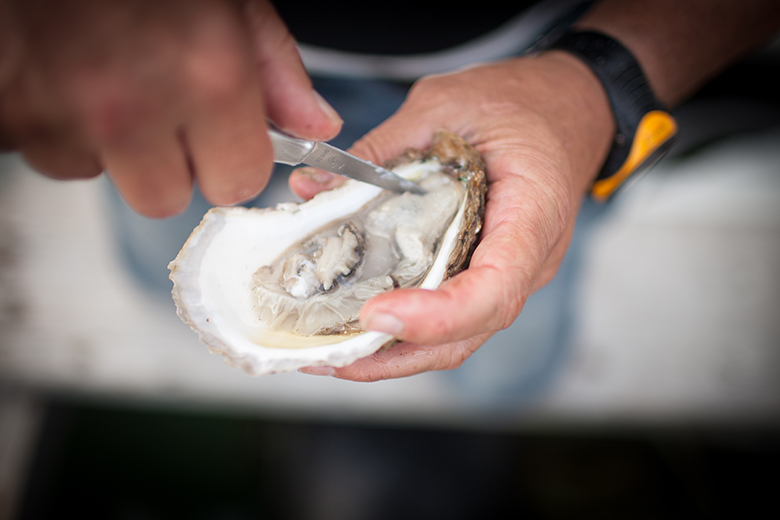
As someone who works in the fisheries world, I get a lot of questions about the “best” fish to buy. Increasingly, people want to know how aquaculture fits into the picture. My answer tends to be rather unsatisfying: “Well, that depends.” Because “What is the best fish?” isn’t quite the right question—it’s really much more contextual than that.
Aquaculture is the fastest growing food sector in the world, though U.S. aquaculture production remains relatively limited, ranking 16th globally. The argument for more domestic aquaculture relies on an oft-cited statistic: The U.S. imports over 90 percent of its seafood, more than half from aquaculture. (I would add that we also export a great deal of seafood. What might it look like if we re-localized our seafood system instead?)
With much attention focused on its growth, it’s likely that we’ll see more U.S. aquaculture in our future. As of now there is no federal framework to regulate aquaculture in the United States, leaving a pretty significant policy vacuum and a lot of open questions.

Balancing our desire for delicious fish with ecosystem health and social justice is tricky, and I can’t give you any easy answers. Instead, here are a few questions to ask when you are thinking about buying farmed seafood:
Read more: The Trouble and Truth About Buying Sustainable Seafood in New York City
Where was the seafood farmed? Traceability is necessary for accountability. Complicated supply chains bring greater risk, so it’s important to ask your seafood purveyor who raised the seafood you are buying.
Does the coastal community want that kind of aquaculture off its shores? In many cases, large aquaculture companies have farm locations all over the world. While they may employ a few local folks, my guess is that most of those profits aren’t going back into the communities where the farms are located. When it comes to choosing what to buy, the same mantra rings true for land food as it does for seafood—know your farmer. Is there a local oyster farmer in your vicinity? Awesome, support them!
Aquaculture operations also may conflict with fishing grounds, important habitats and other ocean users. Care about zoning and development in your neighborhood? The ocean faces similar spatial conflicts. Inform yourself about what those conflicts might be in the area where your farmed seafood is coming from.
Is the species well suited to farming? Shellfish like oysters, clams and mussels—filter-feeders that clean the water and provide habitat for fish—are good, tasty options. Some finfish, like tilapia and barramundi, are hardy and tolerant of crowded conditions.
What does the farmed fish eat? To feed predator species like salmon, wild forage fish populations like menhaden and anchovies are harvested in huge quantities, with rippling effects on ocean ecosystems. Companies are increasingly innovating alternative feeds, but it’s probably a good general rule to steer toward vegetarians like catfish.
These questions are just the tip of the fishing rod, but don’t let that scare you away from eating seafood. For better or worse, farmed seafood will continue to be a part of our food future. So get engaged, keep asking questions, and support community-based seafood.



